Under the Waqwaq Tree
Patricia Domínguez, Madre Drone, 2019 - 2020
Anna Betbeze / Patricia Domínguez / Katie Dorame / Nilbar Güreş / Michelle Handelman / Sahar Khoury / Cathy Lu / Ranu Mukherjee / Shervone Neckles
Curated by Naz Cuguoğlu
At Slash Art (San Francisco)
October 16, 2021 through January 23, 2022
Once upon a time, there was a tree on a far far away island. On this tree grew female creatures, reproducing and self-perpetuating in an endless cycle. You could hear their screams “waq! waq!” at night as they ripened and dropped to the ground.
Same story, different names — Waq Waq in medieval Arab geographical and imaginative literature, Nariphon in Buddhist mythology, Jinmenju in Japanese legends, Zaqqum in the Quran — this is a tale with many echoes across time and geographies. A speculative fabulation, an illusion: Can you prove it did not happen?
Under the Waqwaq Tree brings fabulous creatures and ferocious monsters into the exhibition space to tell stories of the “other” — the so-called aliens (legal or illegal), the ones who have been deemed “mad,” the historically and systemically underrepresented and oppressed. Alongside the Waqwaq tree of many names, there is the mother goddess of Chinese mythology, Nüwa’s long nails; the Jab Jab Woman of the Grenadian masquerade in the form of a Terciopelo (the Caribbean viper); the blinded toucan of South America's rainforests, the special bird sacred to the Incas and revered by the Maya; a lonely vampire, and more. They appear to be mythological stories. When you scratch the surface though, they speak of history and current geopolitical issues: India’s and Grenada’s fights against colonial power; forest fires in the Amazon and a revolution in Chile; racialized hierarchies of nail salons; queer identity and desire. They tell stories that cannot be told by other means for many reasons, including political and personal ones (the personal is political if you need a reminder).
We tell these tales from one generation to the next; we scream at night; we are tired. Does our poetic language sound like silence to you? Good. It is intentional: We use silent metaphors and fragmented narratives to listen and to speak nearby. We are louder than you think. We keep the fire burning at night so we can sit by it to tell these stories until dawn.
“There is one mark you cannot beat, the mark inside,” Musidora, the French silent film actress, says.
This show is dedicated to all those fabulous mercurial beings: half-human, half-snake like Shahmaran, neither here nor there but stuck at the A'raf, in limbo between heaven and hell. Fluid and bubbling, an Água Viva, this is a tale about hybrid creatures and magical transformations. It is a mirror for those who are mourning for the loss of identity or community. Psychoanalytically speaking, the works in the show create a shift in time and place, or an allegory with layered meanings, underlying and persisting.
waq! waq! waq!!!
Under The Waqwaq Tree Recommended Book List
Press:
SF Arts by NY Times
48hills
Journal.fyi
Installation Views:


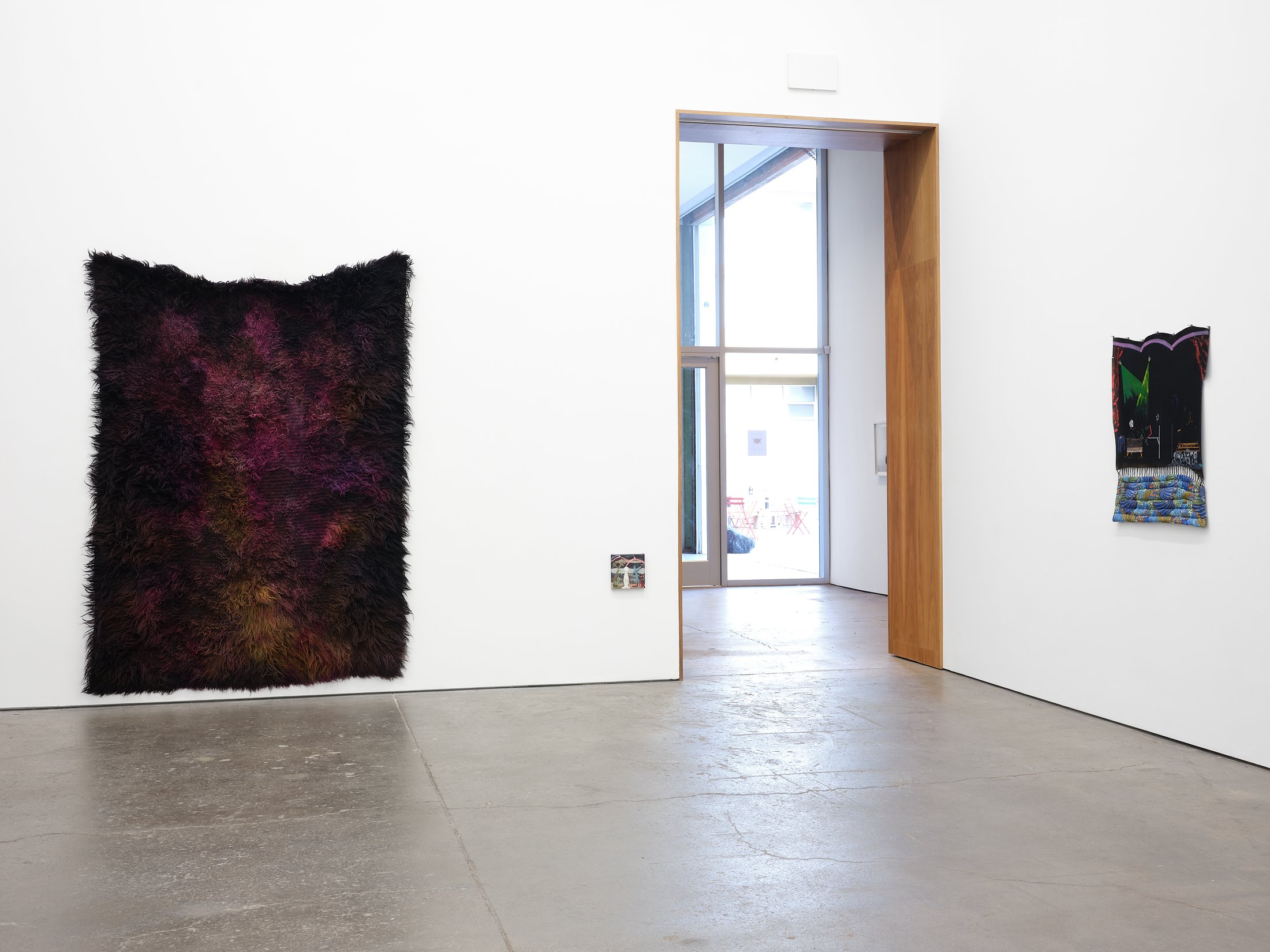
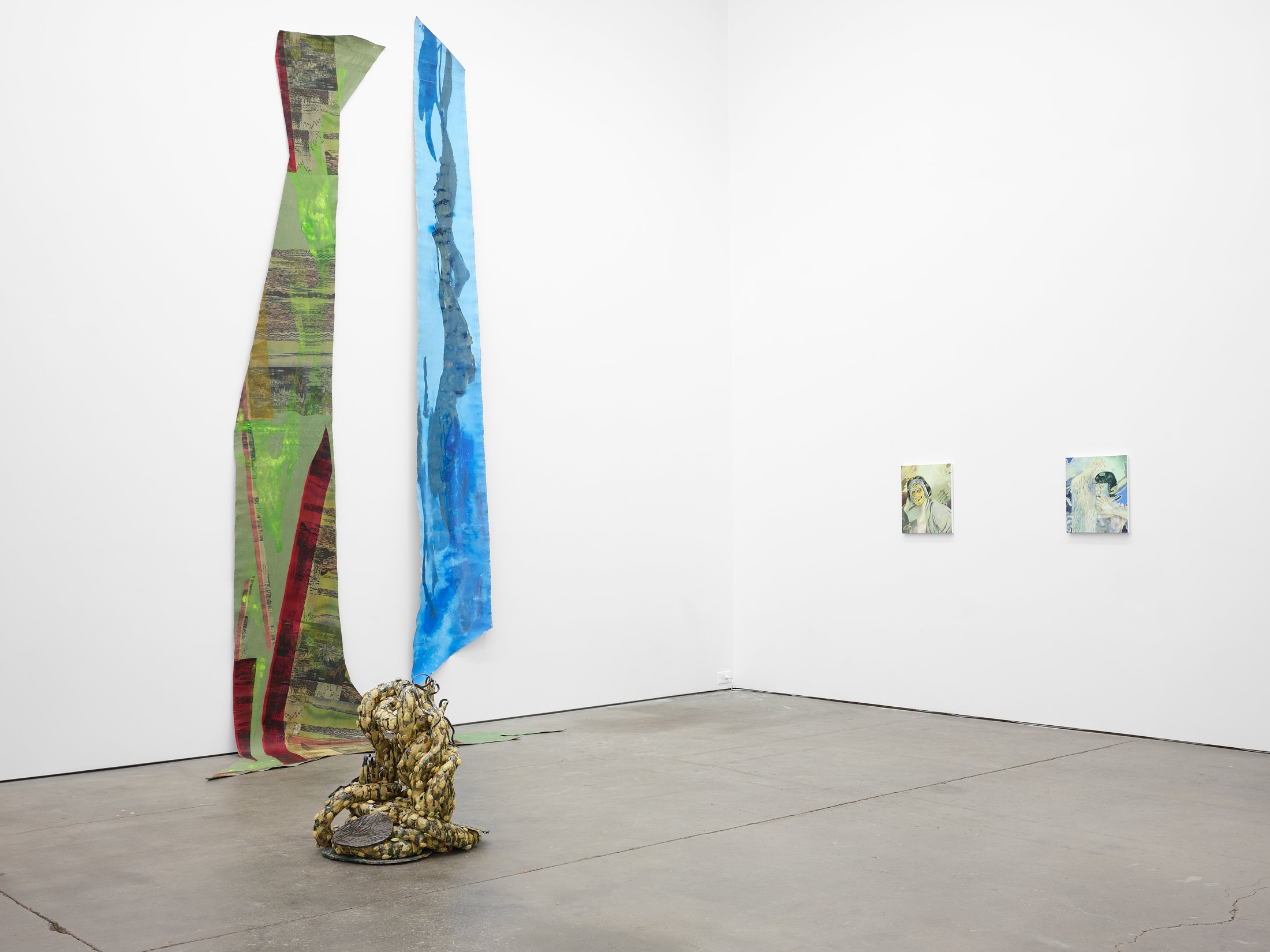
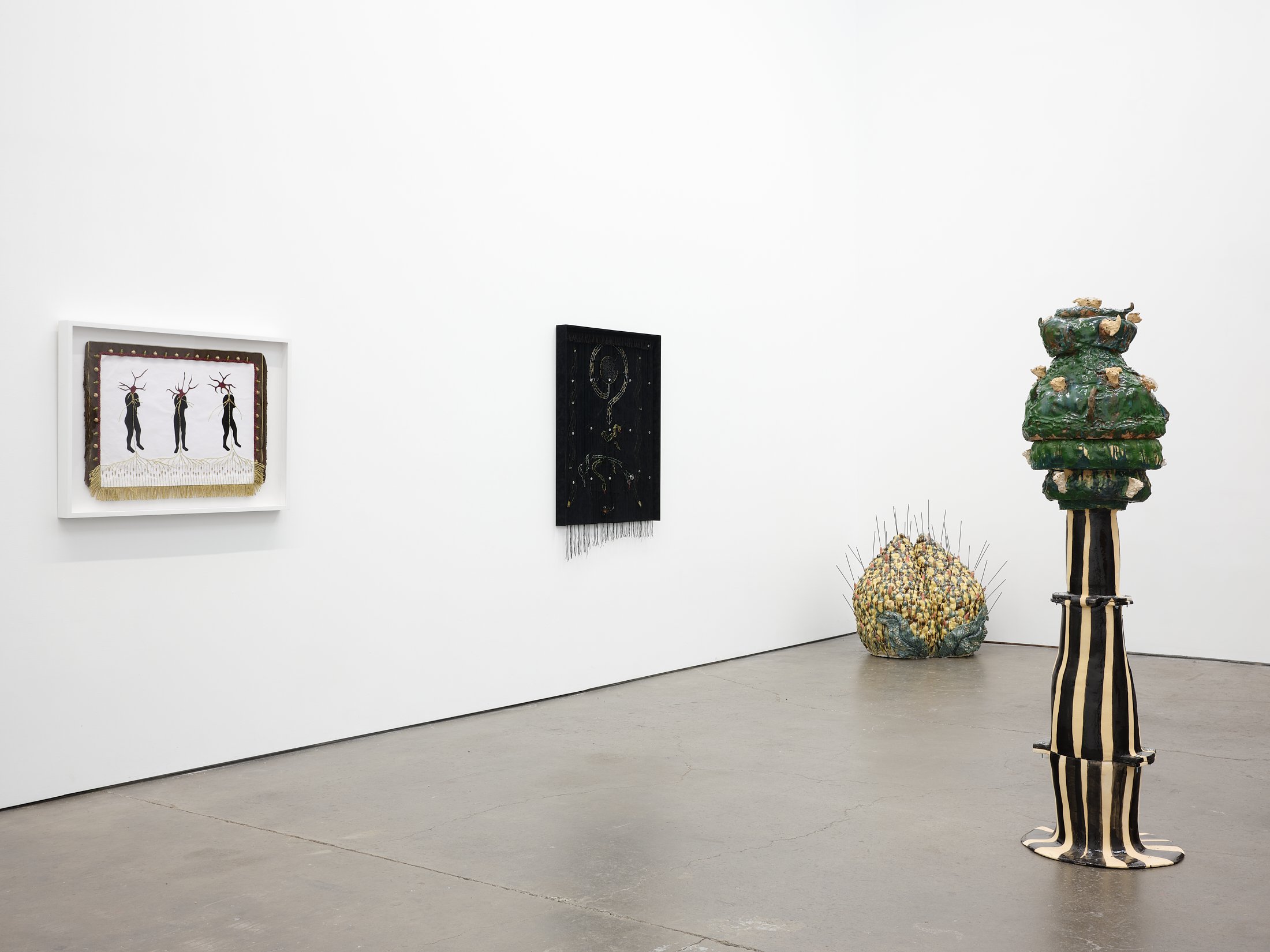
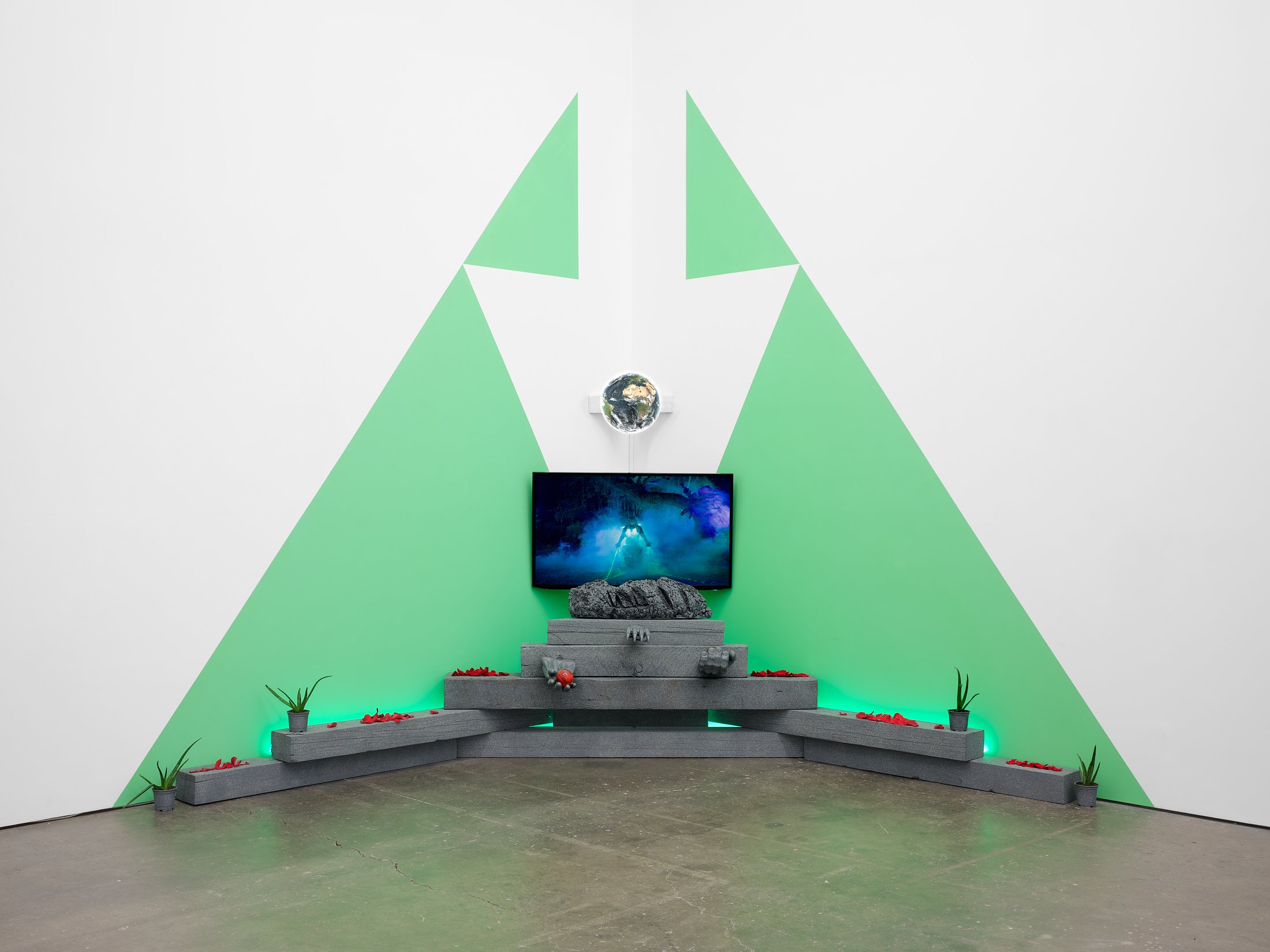
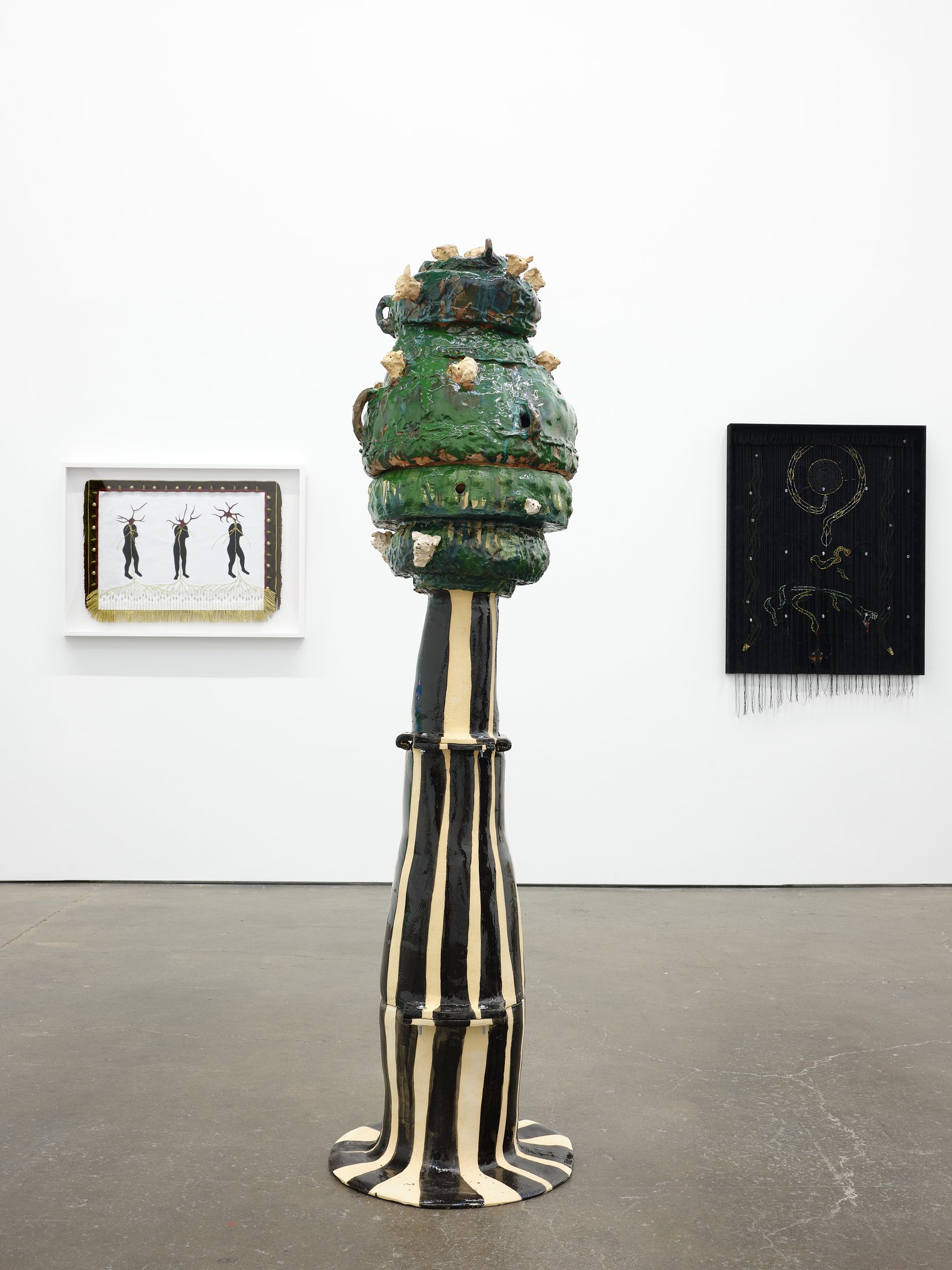
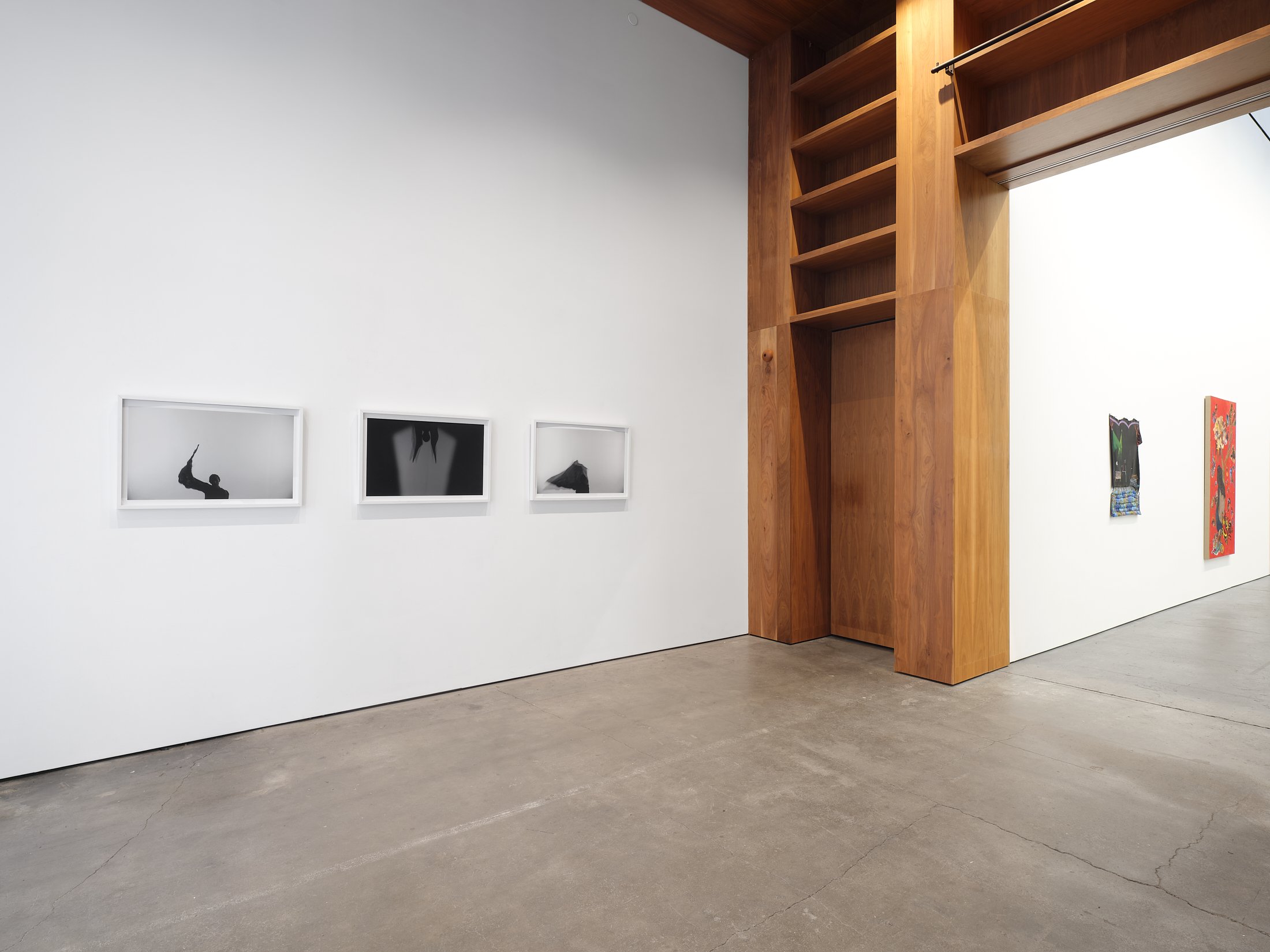
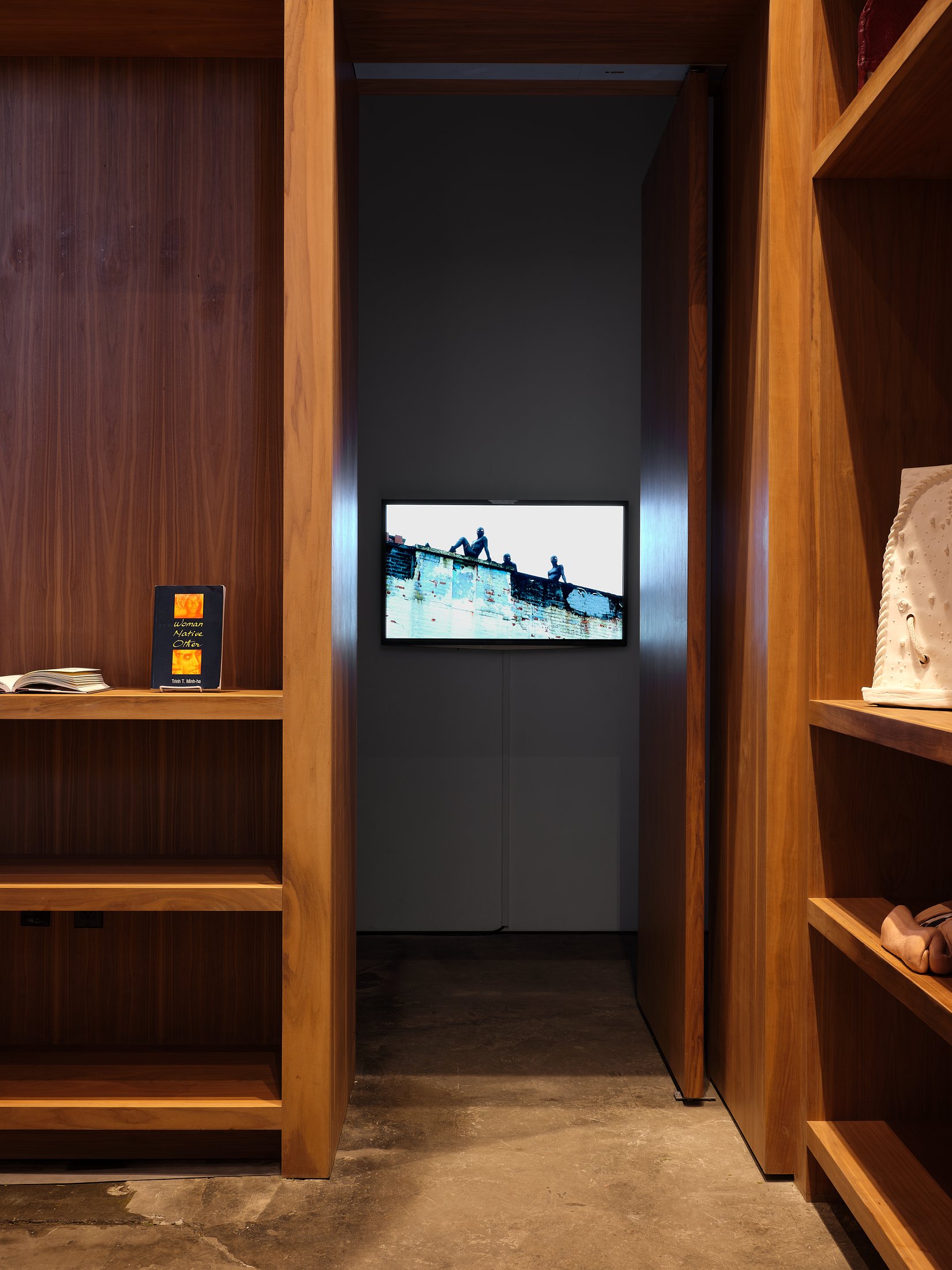
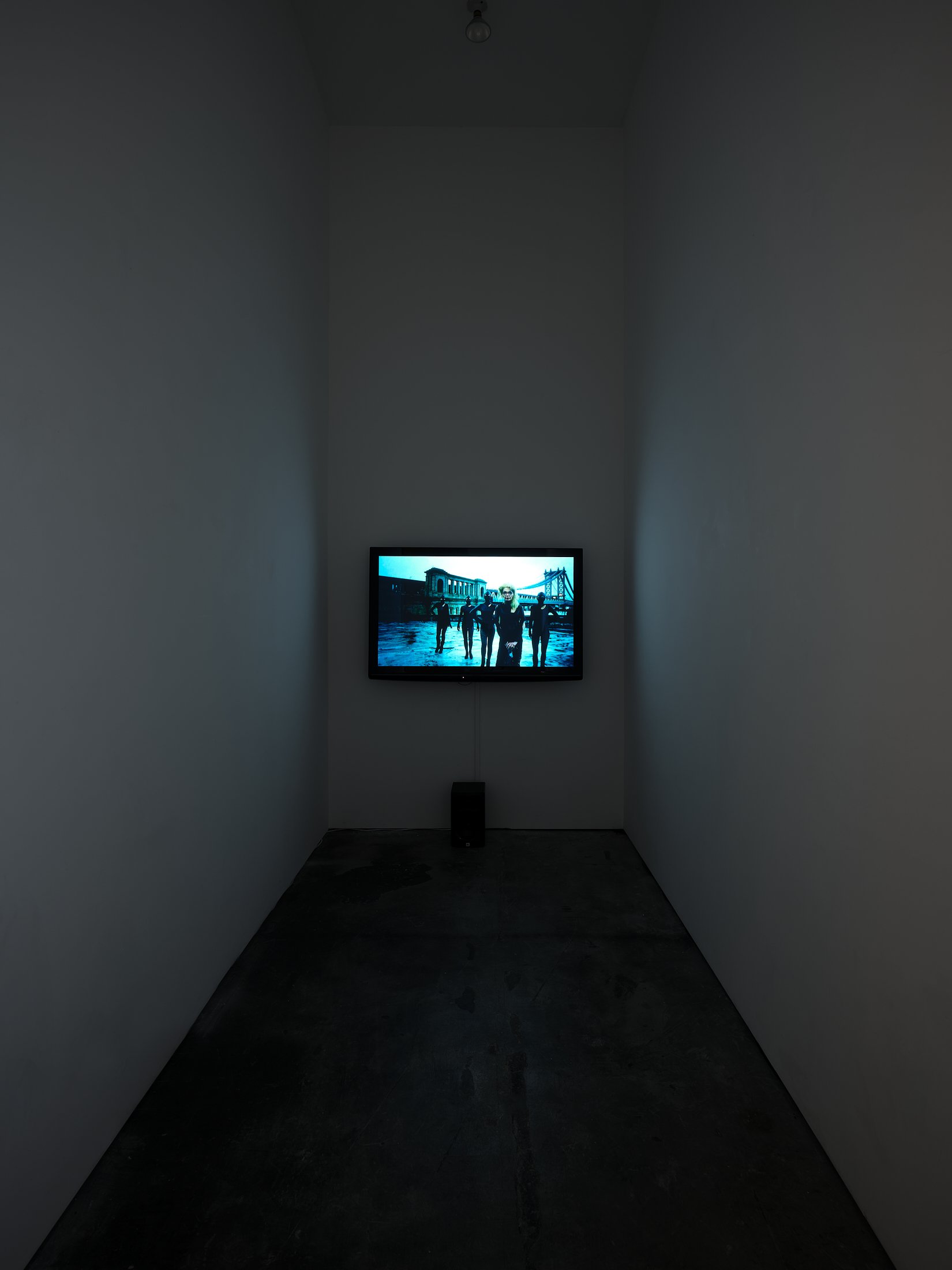
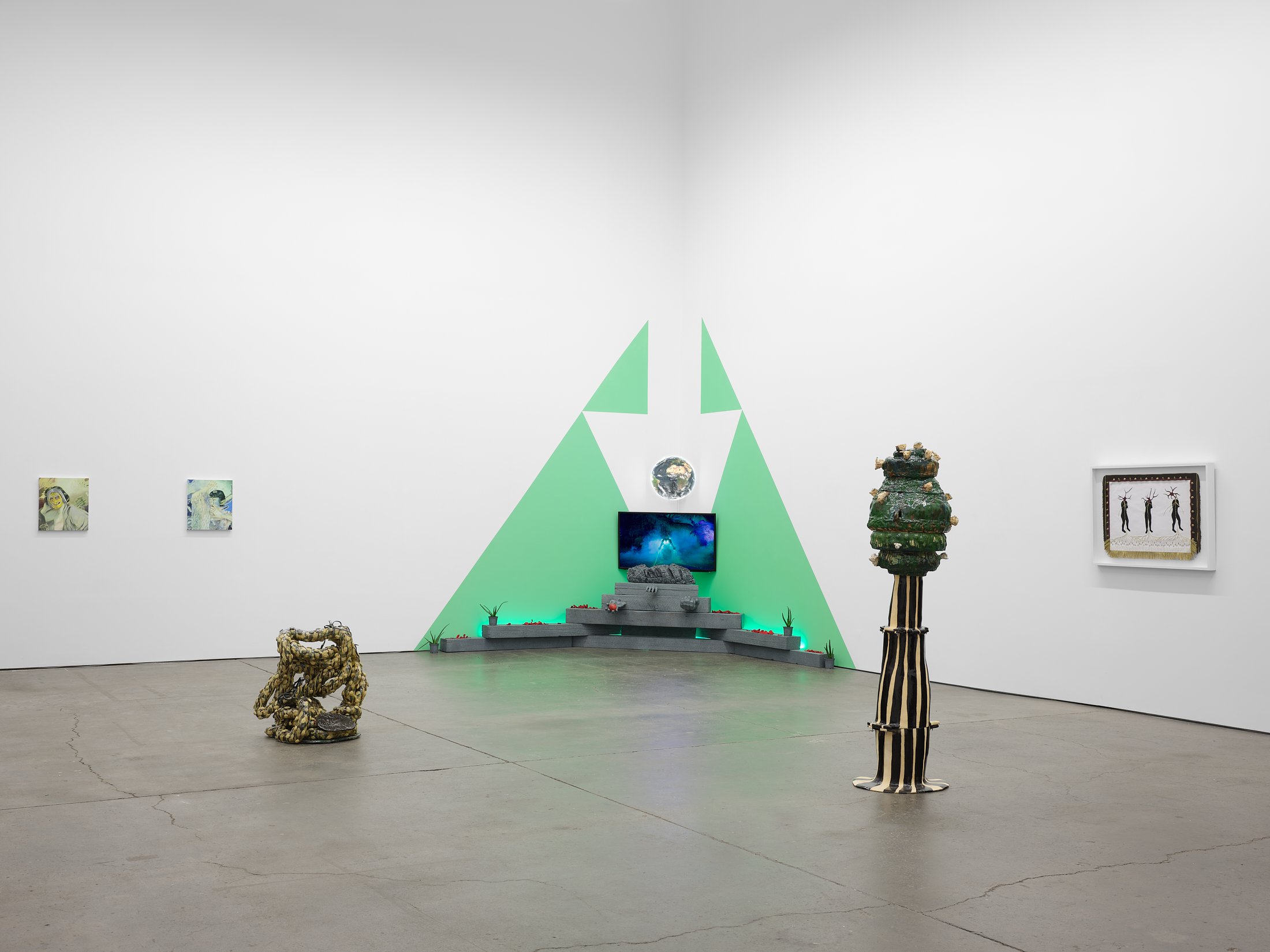
Anna Betbeze (b 1980, Mobile, Alabama) lives and works in Los Angeles, CA. Betbeze has had solo exhibitions at MassMOCA, Utah MOCA, The Atlanta Contemporary, The University of the Arts, Philadelphia, Nina Johnson, Miami, Markus Lüttgen, Cologne, Lüttgenmeijer, Berlin, Luxembourg & Dayan London, Kate Werble Gallery, New York, and Francois Ghebaly, Los Angeles. Betbeze’s work has been shown at institutions such as MOMA PS1 and Musee d’Art Moderne de la Ville de Paris.
Patricia Domínguez Claro (b.1984, Santiago de Chile) is an artist, educator and defender of the living. Bringing together experimental research on ethnobotany, healing practices, and the corporatization of wellbeing, her work focuses on tracing relationships among living species in an increasingly complex cosmos. Her main projects have been exhibited at Gwangju Biennale, Gasworks London, Transmediale Berlin, Seoul Museum of Art, Museo Thyssen Bornemisza, and FLORA ars+natura, among others. In 2021 she received the Simetria award to go to CERN and contributed to the book Documents for Contemporary Art Issue HEALTH DoCA. She is currently director of the ethnobotanical platform Studio Vegetalista.
Katie Dorame is a visual artist born in Los Angeles, currently living and working in Oakland. Dorame’s work has recently been exhibited at Shulamit Nazarian in Los Angeles, Guerrero Gallery in San Francisco, Form and Concept in Santa Fe and the de Saisset Museum in Santa Clara. She has attended the Institute of American Indian Arts in Santa Fe as an artist in residence, and contributed to SFMOMA’s Open Space project blog. She is a mixed descent Indigenous artist and member of the Gabrielino/Tongva tribe of California.
Nilbar Güreş (b. 1977 in Istanbul, Turkey) received a B.A. in Painting from Marmara University, Istanbul, and an M.A. in Painting & Graphics from the Academy of Fine Arts, Vienna. Güreş received the Hilde Goldschmidt Prize (2013), the Otto Mauer Award (2014), BC21 Art Award (2015), De'Longhi Art Projects Artist Award (2018), and the Prix Maud Mottier Award (2021). Her selected group exhibitions include: Yokohama Triennial, 21st Contemporary Art Biennial - São Paulo, 20th Biennale of Sydney, EVA International Ireland’s Biennial, and 11th Istanbul Biennial.
Michelle Handelman’s phantasmagoric video installations explore the dark and uncomfortable spaces of queer desire. Coming up through the years of the AIDS crisis and Culture Wars, Handelman has built a body of work that uses moving images, live performance, and text, to push against the boundaries of gender, race, and sexuality. She is a Guggenheim Fellow (2011), a Creative Capital Awardee (2019), and her recent project Hustlers & Empires (2018) was commissioned by the San Francisco Museum of Modern Art.
Sahar Khoury is an artist based in Oakland, California. Khoury works with found objects, clay, paper mache, cement, and metal creating sculptures and site-specific installations. She received her BA in Anthropology from UC Santa Cruz in 1996 and her MFA From UC Berkeley in 2013. She was the recipient of The San Francisco Museum of Modern Art 2019 biannual SECA Art Award and the 2018 Triennial Exhibition, Bay Area Now 8 at the Yerba Buena Center for the Arts. Khoury’s work has been exhibited at SFMOMA, YBCA, The Wattis Institute, Rebecca Camacho (SF) and CANADA (NY).
Cathy Lu (b. Miami, FL) is a ceramics-based artist that manipulates traditional Chinese art imagery and presentation as a way to deconstruct the assumptions we have about Chinese American identity and cultural authenticity. She received her MFA from the SFAI, and her BA & BFA from Tufts University. She has participated in artist in residence programs at Root Division, Recology SF, and Archie Bray, MT. Her work has been exhibited at Aggregate Space, Berkeley Art Center, and Chinese Culture Center. She was a 2019 Asian Cultural Council/ Beijing Contemporary Art Foundation Fellow and a 2020 NCECA Emerging Artist. She currently teaches at California College of the Arts and Mills College.
Ranu Mukherjee makes hybrid work in moving image, painting and installation to build new imaginative capacities. She is guided by the forces of ecology, diaspora, motherhood and transnational feminisms. Mukherjee is a Lucas Visual Arts Fellow and the recipient of a 2020 Pollock- Krasner Foundation Grant. ‘Shadowtime’, the first monograph on her work, was released in September 2021 by her representing Gallery Wendi Norris. Mukherjee is also co-founder of the artist avatar 0rphan Drift and Chair of Film at California College of the Arts.
Shervone Neckles was raised in Brooklyn, NY and currently lives in Queens, NY. Her interdisciplinary art practice draws inspiration from the duality and transitional nature of her Afro-Caribbean American identity. Her work embraces collage, alternative printmaking techniques, textile works, social investigations, sculpture, and installation. She currently has a new public art installation, BEACON, inspired by African American inventor Lewis H. Latimer on view at Downtown Brooklyn Art Fund.

